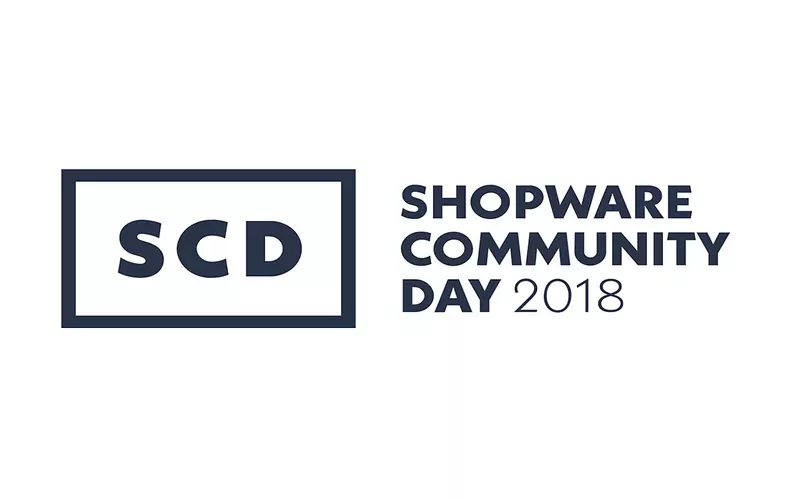
Recap: Shopware Community Day 2018
This year's Shopware Community Day (SCD2018) already started with a surprise in the preparation phase. After many years in which the event took place on the Tobit site in Ahaus, it now went for the first time in the Ruhr area - more precisely: in the Landschaftspark Duisburg-Nord. As I found out later, it was simply due to a lack of space.
The location was quite an unusual choice for an IT conference. Barely out of the streetcar, the path led past meadows and hopping rabbits before I reached the site of the disused steelworks.
The SCD2018 was held under the motto "Beyond Horizon" and invited creative exchange, to which the environment certainly contributed. Stefan Hamann, CEO of Shopware AG, understood creativity in his keynote speech as a return to the informality and freedom that each of us experienced as a child. In this way, he ultimately spanned the arc to the presentation of the new major version of Shopware, which is breaking new ground here in terms of its architecture and its concepts.
![[Translate to English:] Dr. Frederik G. Pferdt](/fileadmin/_processed_/0/8/csm_scd2018-Dr-Frederik-G-Pfe_9408716419.webp)
A new playground for developers and interested parties
As an appetizer for the new version, Hamann presented the Shopware Playground, which will be released in fall. On this platform, it will then be possible to experiment with the new Shopware application and try out new things. One's own experiments can be shared with other interested parties in a "marketplace" or ideas published there can be viewed and tested. In this way, Shopware AG wants to collect feedback, suggestions and criticism for the new Shopware platform at a relatively early stage, which will then flow into the development of the new release.
He also announced perhaps the most important new feature for existing installations in the upcoming Shopware 5.5: With version 5.5, ionCube can no longer be used. All plugins purchased via the Shopware Store will then be available without encryption. This also makes it possible for Shopware to use the current PHP version 7.2. Previously, the slow development of ionCube prevented the use of current PHP versions.
Stefan Hamann's keynote was followed by the more technical talks, which I then focused on first. Core developers and UX developers presented the new Shopware core in detail. Of particular interest to us is that Shopware has finally found its way towards Composer in 2018. Operation and deployment of the shop installations are thus significantly simplified.
By using Composer, future installations can be rolled out with reproducible versions of all components for the first time. In addition, a rich assortment of 3rd party libraries is available to both the plugin authors and the core developers themselves, whereby much functionality need not be newly developed, but rather existing and proven implementations can be used. This also includes, for example, that the new core no longer brings its own application framework, but was instead designed as a fully-fledged Symfony application.
New features in the new Shopware version
Important new feature: Shopware can now work headlessly. Things we already support in the TYPO3 area and with our own developments, now also work with Shopware: namely scaling the frontend that the customer sees as desired and running it independently of editorial systems. This is because the new storefront only communicates via APIs with the actual shop system. Even the backend is now only an application that works on the API. Optimizations in this area benefit not only the shop visitors, but also the editors in the backend.
However, there was one - really fundamental - new development: Unlike Shopware 5, the new code no longer relies on the Doctrine ORM, but on a homegrown product from Schöppingen. The rationale, however, sounded more than plausible. Instead of relying on an ORM component that has to work in all scenarios, they wanted to specifically serve the needs of eCommerce here. Specifically, the new database abstraction layer will support, among other things, flexible caching of read accesses by Redis, for example. On the other hand, it will also be possible to process mass imports using a message queue, as offered by e.g. RabbitMQ, instead of doing it in real-time for example. This allows processes and participating systems to be decoupled from each other.

The crowning finale: the after-show party
The Shopware Community Day 2018 concluded with the - as always legendary - after-show party, which lasted late into the night. With cold beer and delicious food, it was a great opportunity to network and, of course, to party hard.
In any case, we are - as Stefan Hamann would call it - "heiß wie Frittenfett" (translator's note: German idiom for completely on fire that roughly translates to "hot as deep-frying fat") for what will happen with Shopware in the near future and are looking forward to the first projects with the new core.
Please feel free to share this article.
Comments
No comments yet.